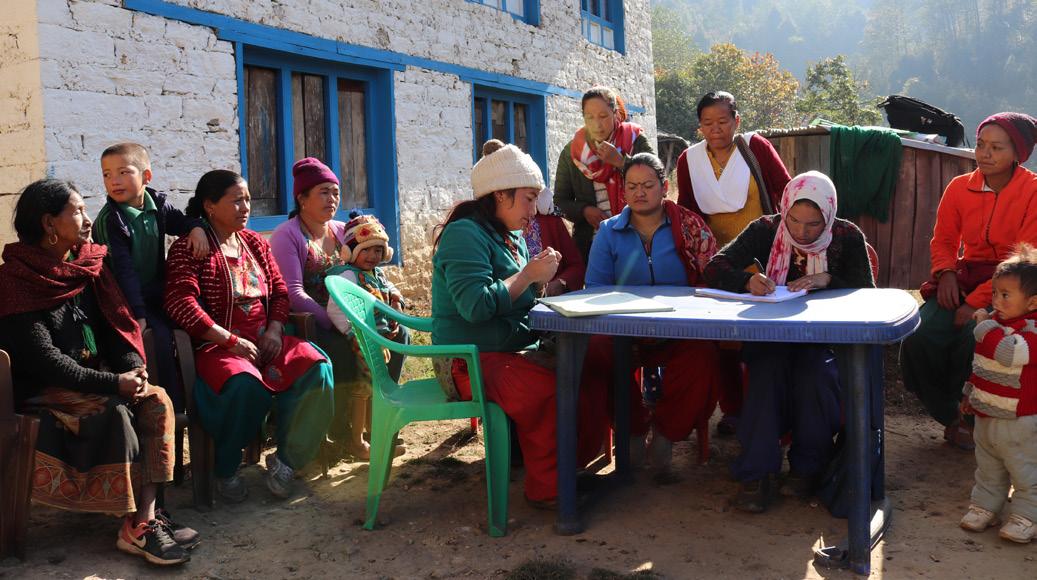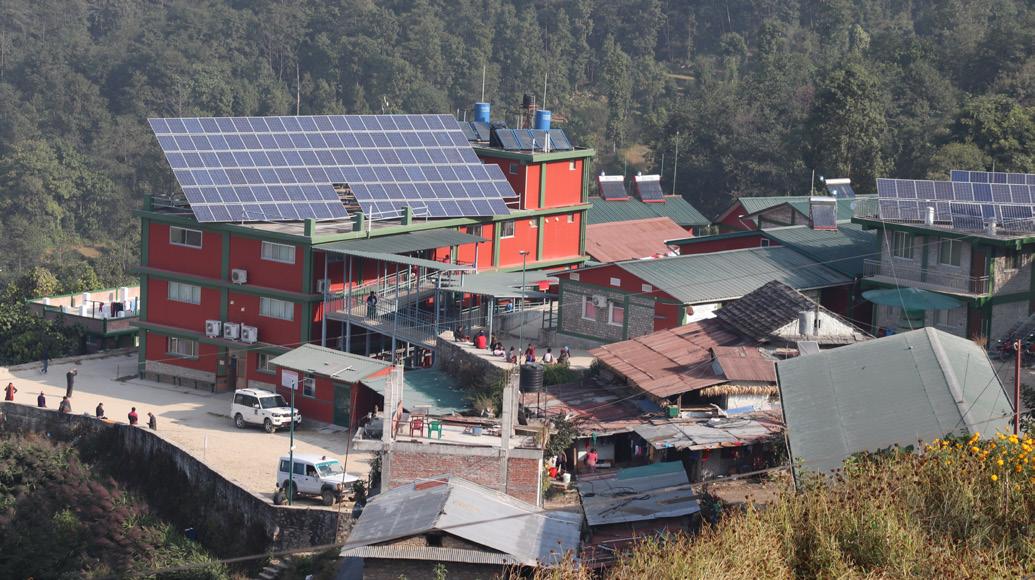
6 minute read
Expectant hope
Bimala Biswakarma with her husband and baby
Karen Craig shares her experience of visiting a residential home in Nepal that cares for expectant mothers, a project supported by Presbyterian Women.
“It’s a girl!” “It’s a boy!” “It’s twins!” Have any of these exhuberant expressions ever been said to you, or perhaps a sister or a friend? What excitement it holds; the future is no longer the same as before, a miracle has happened as a new life has entered into the family.
For many women the experience of pregnancy and childbirth is straightforward, yet for others it can be filled with worry or concern. At these times many parents appreciate the help and support given to them by family and friends, but especially the medical expertise they receive. Imagine, however, that you live 9,500 feet above sea level, in a small village in the Himalayas. You sense that something is not quite right with your pregnancy; you have a little help, maybe a neighbour or friend, but you know that more support is needed. This is a picture of what could happen as in Nepal almost 50% of births happen at home with minimal or no support.
Travel in the foothills is dictated by the terrain. When you think of making a journey you estimate in terms of time and not distance, as the roads twist and turn, are rough and at times difficult to negotiate.
I travelled some of these roads in November 2019 when I visited Okhaldhunga Community Hospital in Nepal. The hospital is nestled in a valley at 6,500 feet in the foothills of the Himalayas. It is supported by United Mission to Nepal (UMN). Peter Lockwood, one of PCI’s global mission workers, has helped with work on the hospital in his role within UMN. The 50-bed hospital has an outpatients department, TB unit, X-ray department, general surgery, paediatrics and maternity wards and it aims to provide these services to the surrounding rural districts.
For many of the women living in these areas it has been a lifeline to them, especially during their pregnancy. The hospital has been offering help and support to the communities around and so they have developed the maternal waiting home. The idea is to encourage women to come to hospital for their antenatal visits; and then, if the staff are concerned for the baby, or if the delivery may pose a problem, it is suggested to the parents they come to the maternal waiting home a week or so before the due date. It means the mother-to-be is onsite and will have all the help and support she needs. Up to a third of the women
This is the reason the home exists – to bring hope to these ladies and their families.


who have availed of this service are young under 20s having their first baby.
The home was set up around 15 years ago with a vision of providing good medical care and support, as well as antenatal, family planning and good nutrition classes to the mothers-to-be and fathers. When a woman comes to the home she is expected to pay 7,000 rupees (about £7) for her stay; a family member, preferably the father, is also encouraged to stay. If he is unable to come then her mother or sister may come. The family member helps with the cooking and upkeep of the home, as well as participating in classes to prepare for the impending arrival. For many, the home also provides camaraderie, a sense of family and in turn they learn from and support one another.
The home also takes away the feeling of being alone, especially as the time of delivery draws near. The nursing sister, Nirmala, gives reassurance to these women, as she treats them as her own family. She runs the classes, checks on them twice a day and is around, if possible, at the time of delivery in the main hospital. The work of this home cannot be underestimated – there is no doubt that some of the babies would never survive without this service. As word about the home has spread, more women are now using this facility. I had the opportunity to hear the story of two of the ladies. The first was a young girl who had been married at 12, had her first child at 14 and, at 20, was expecting her second. Uma Sunuwar lived in a village three hours’ walk away. The baby was in a breech position and she was encouraged to stay until the baby was due within the next week. She was hoping to take home a healthy baby. The one thing that struck me about her was her lovely smile. She was so appreciative of the home and the care and support she had been given. She was looking forward to the birth, knowing she would have all the expertise she required.
The second lady, Bimala Biswakarma, came from a village close to where I had visited. Her journey to the hospital would have been a difficult one due to the remoteness of the area. In some cases,
expectant mothers may have to travel up to four hours (or in a few cases up to eight hours!) by walking, bus, jeep or motorcycle. Bimala had been for a checkup and it was discovered that one of the twins she was carrying had died, but the hospital staff thought if she was prepared to stay at the home for the next 8–10 weeks they could save the other twin. This was a lot to ask her to do, but she and her husband decided it was their only option. In January 2020 she gave birth to a healthy baby girl. This is the reason the home exists – to bring hope to these
ladies and their families. The hospital also has a follow-up for the patients when they return home.
The vision of Yubraj Acharya, the hospital director, is to see the hospital extended to 100 beds. The bed occupancy at times can be around 130% – meaning there is always pressure for bed space and on providing adequate staff levels and care for the patients. Part of the plan has been to start a nursing school so that nurses can be trained at the hospital, giving employment to the local area and hopefully, keeping them in the area after training.
As we are aware in our NHS, there is always pressure for bed space and adequate staffing, and it is no different in Okhaldhunga. In Nepal, Covid-19 has had a major impact on the running of the hospital and its services. Please pray for the work of the hospital in this challenging time: for safety for the staff and patients; for ways in which support can still be given to the expectant mothers; and for the vision to see the hospital expand in the future.
Presbyterian Women (PW) has two projects on which members focus each year, one at home and one overseas. Through the PW mission fund they financially support the projects and pray for them too. For 2021–2022 the overseas project is the maternal waiting home in Nepal. The home project is Care NI which supports women who have lost a baby through miscarriage, stillbirth or soon after birth.
Your prayers for both the projects would be very much appreciated. Information can accessed through the Presbyterian Women website (www.presbyterianireland.org/pw) or Facebook page.
Please remember also the work of PCI’s global mission workers in Nepal. For more information, ‘Digital Dispatches’ by Peter and Valerie Lockwood and Peter and Jayne Fleming are available at www.presbyterianireland.org/ digitaldispatches

Karen Craig is a retired primary school teacher and was PW president in 2019/2020.

